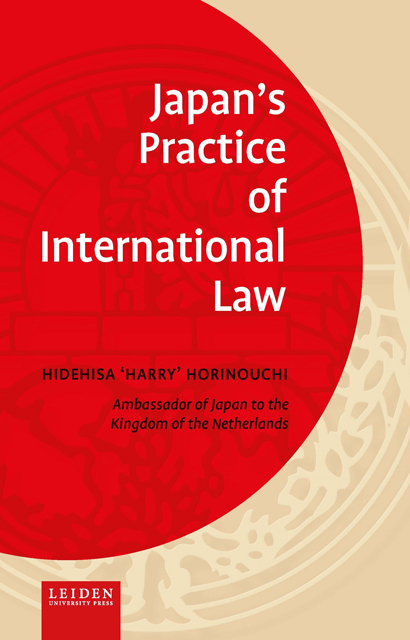Book contents
- Frontmatter
- Dedication
- Contents
- Foreword
- Chapter I Security and the Right of Self-Defense: 8 Hours on September 11
- Chapter II The End of the War: How World War II ended in Asia
- Chapter III The Remnants of War: Chemical Weapon: Poisonous Gas Accident in Qiqihar City, Heilongjiang Province
- Chapter IV Waters: Spy Vessel Incident in the Southwest Waters of Kyushu
- Chapter V Consular Affairs: Japan-China Consular Agreement:* Trajectory from the Shenyang Consulate-General Incident
- Chapter VI Human Rights of a Hijacker: CAAC Flight Hijacking Incident
- Epilogue
Chapter IV - Waters: Spy Vessel Incident in the Southwest Waters of Kyushu
Published online by Cambridge University Press: 12 January 2023
- Frontmatter
- Dedication
- Contents
- Foreword
- Chapter I Security and the Right of Self-Defense: 8 Hours on September 11
- Chapter II The End of the War: How World War II ended in Asia
- Chapter III The Remnants of War: Chemical Weapon: Poisonous Gas Accident in Qiqihar City, Heilongjiang Province
- Chapter IV Waters: Spy Vessel Incident in the Southwest Waters of Kyushu
- Chapter V Consular Affairs: Japan-China Consular Agreement:* Trajectory from the Shenyang Consulate-General Incident
- Chapter VI Human Rights of a Hijacker: CAAC Flight Hijacking Incident
- Epilogue
Summary
Introduction
On March 6, 2002, at a press conference at the National People’s Congress in China, Foreign Minister Tang Jiaxuan raised his voice in response to a reporter’s question. “The Chinese side … expresses strong dissatisfaction with the Japanese side’s careless use of force in the exclusive economic zone of the Chinese side and the sinking of the vessel … We insist that Japan respects the rights and concerns of the Chinese side on this case, and will not take actions that may make the situation worse and more complicated”. This was the moment when it was revealed to the outside that China did not want “salvage”, which could lead to “a worse and more complicated situation”. However, in October of the same year, seven months after this statement, the “China Marine Bulletin” posted a commentary that highly evaluated the salvage. It reported that the salvage of the suspicious ship “had established an example for reasonably settling the dispute and dealing with a case that could occur in the exclusive economic zones”. During these seven months, the Japanese side, in order to elucidate the whole picture of the suspicious ship incident, conducted a manned diving survey from May 1 to 8 and carried out the hull’s salvage successfully from June 25 to September 14 with the cooperation of the Chinese side. Throughout 2002, this North Korean spy vessel incident was widely reported, with details on the large amount of weapons found, special hull structures, and various evidence including mobile phones. However, the successive talks be tween Japan and China, that had been held to gain the understanding and cooperation of the Chinese side regarding the salvage had not been widely reported. In this paper, I would like to look back on the handling of the suspicious ship incident, which was highly evaluated by the Chinese side, by giving an overview of the issues under international law discussed at the Japan-China talks.
The author was directly involved in the handling of the incident and the negotiations with China as the director of the Legal Affairs Division of the Treaty Bureau at the time of the suspicious ship incident, and as the director of the China Division, Asian and Oceanian Affairs Bureau of the Ministry of Foreign Affairs of Japan after April 2002.
- Type
- Chapter
- Information
- Japan’s Practice of International Law , pp. 71 - 88Publisher: Amsterdam University PressPrint publication year: 2022



